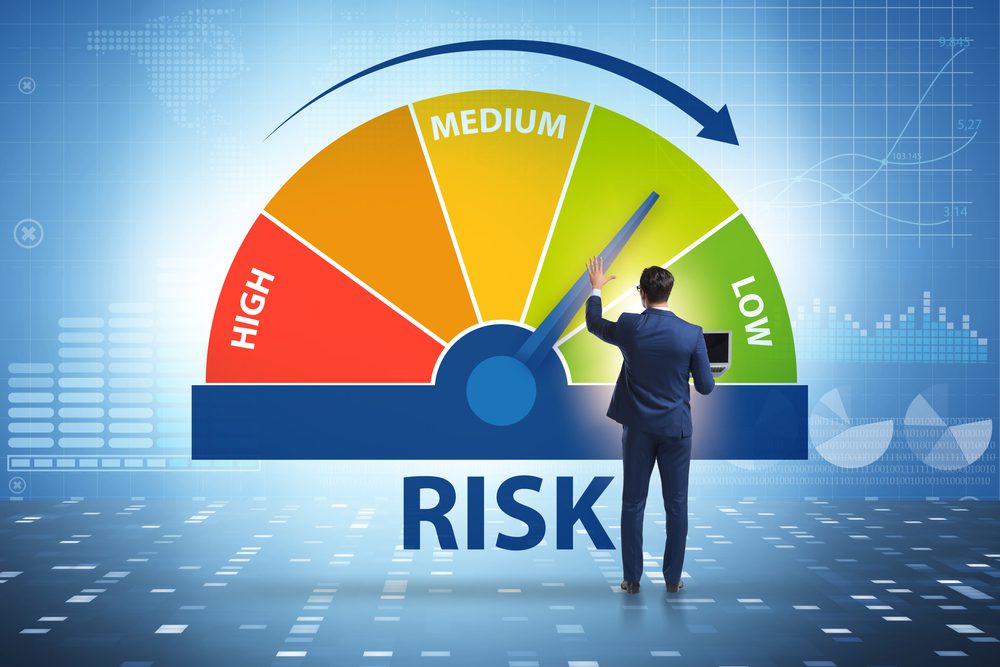The value of risk assessment in education
Universities and other higher education institutions across the globe are facing a higher level of risk due to more stringent regulatory requirements and public scrutiny as well as credit/ financial situations, and a general economic downturn. Here is how risk assessments can help in these instances.
The value of risk assessment in education
Universities and other higher education institutions across the globe are facing a higher level of risk due to more stringent regulatory requirements and public scrutiny as well as credit/ financial situations, and a general economic downturn. Here is how risk assessments can help in these instances.
How a risk assessment in education can help

Risk assessment in education involves taking a methodical approach to understand the risk landscape of a particular institution, identifying the risks that it may be exposed to, assessing their potential impact and likelihood of occurrence, and implementing management plans to avoid, transfer, or mitigate these risks.
Comprehensive risk management also requires continuous monitoring, evaluation, and improvement to drive the best results.
Research indicates that taking a structured approach to risk management through Enterprise Risk Management (ERM) is one of the most effective ways of counteracting the risks that educational institutions in this day and age face.
This approach to risk management places a high priority on the activities carried out within risk assessments like identification, assessment, prioritisation, treatment, monitoring and review.
This process creates a much more robust risk management function, protecting higher education institutions against the vast array of risks that they are facing in the contemporary business environment.

Risk assessment in education involves taking a methodical approach to understand the risk landscape of a particular institution, identifying the risks that it may be exposed to, assessing their potential impact and likelihood of occurrence, and implementing management plans to avoid, transfer, or mitigate these risks.
Comprehensive risk management also requires continuous monitoring, evaluation, and improvement to drive the best results.
Research indicates that taking a structured approach to risk management through Enterprise Risk Management (ERM) is one of the most effective ways of counteracting the risks that educational institutions in this day and age face.
This approach to risk management places a high priority on the activities carried out within risk assessments like identification, assessment, prioritisation, treatment, monitoring and review.
This process creates a much more robust risk management function, protecting higher education institutions against the vast array of risks that they are facing in the contemporary business environment.
Common risks for higher education institutions and the role of risk assessments
As stated before, the risk for educational institutions in this day and age is dynamic and unpredictable. Here are the most common forms of risk that a risk assessment can help manage.
Regulatory and legislative risks
Changes in regulations and legislation can have a significant impact on the operations of higher education institutions, particularly in the case of funding, student recruitment, and academic standards.
Effective management of these risks requires staying up-to-date with the latest developments in regulations and developments of appropriate contingency plans. Risk assessment in education facilitates this process by streamlining the compliance process.
Economic downturn
Economic downturns impact the entire market, significantly impacting provisions for funding, potential for student recruitment, research funding and the hosting of educational events and conferences.
Effective management requires developing and implementing sound financial policies and procedures, diversifying revenue streams, and continuously monitoring financial performance. Risk assessments offer structured guidelines to enact these measures.
Reputation or brand damage
Reputation and brand are critical factors of success for higher education institutions as they rely on trust and goodwill for growth. Damage to reputation or brand can significantly affect their ability to attract and retain students, staff, and funding.
Effective management of these risks requires developing a strong brand and reputation management strategy, monitoring social media and other online communication platforms, and rapidly responding to issues. Risk assessment can help formulate effective contingency plans and strategies that can deliver on these requirements.
Apart from these core risk factors, higher education institutions also face risks related to health and safety, finance, and overall business strategy. Implementing risk assessment in education is highly advised in identifying the individual risks that each of these factors may create and addressing them appropriately.
Manage risks and ensure growth in your educational institution with SECTARA’s risk assessment solutions
We understand the pressures of maintaining a higher educational institution in this day and age. Delivering on the expectations of students and other stakeholders while also ensuring regulatory compliance in an economy that is facing a downturn is no easy feat.
We want to help you ease the burden by helping you prepare for the risks that you face in this context by providing a simple, precise, and accessible platform to carry out risk assessments that deliver value and drive results in your risk management efforts.
Our risk assessment solutions in education provide a comprehensive set of tools for higher educational institutions to detect and mitigate the challenges and create a stable and safe environment for students, staff, and faculty.
Experience the freedom and stability a reliable risk assessment solution brings with SECTARA’s 14-day free trial. Click the button below to access it.
Some of the industries we serve
Government
Identify, monitor, and manage systemic risks associated with policy implementation, public safety, and national security with a scalable and configurable risk assessment solution.
Critical infrastructure
Obtain insights to identify and mitigate potential threats to critical infrastructure like energy, transportation, and communication systems through professional risk assessments.
Mining
Ensure safe, secure, and efficient operations and overcome common mining challenges like equipment failure and environmental hazards via a professional risk assessment solution.
Defence
Obtain a comprehensive view of potential threats to national and regional security and implement effective risk management strategies with military-grade risk assessment solutions.
Healthcare
Ensuring the safety of patients, staff, and other stakeholders while managing risks associated with medical procedures and data privacy through a configurable risk assessment solution.
Finance
Identify, monitor, and manage critical risks like market volatility and data breaches with a risk assessment solution to protect stakeholder assets and ensure regulatory compliance.
Consultancy
Help your clients make informed decisions about risk management by leveraging insights from a professional risk assessment solution that helps identify, address, and monitor risks.
Cybersecurity
Protect your digital assets with our advanced cybersecurity risk assessment solutions. Stay ahead of evolving threats and fortify your defences with comprehensive risk assessments.
Education
Identify and mitigate compliance, finance, operational, and reputational risks in processes such as student selection and regulatory adherence with professional risk assessments.
Experience the capabilities of SECTARATM first-hand. Sign up for our 14-day free trial today.
Start your 14-day free trial
What you get with our free trial
2 users (Account Admin, Org & BU Admin, Assessor, Viewer)
2 concurrent assessments
2 organisations & business units
In product training
The ability to export assessments to MS Word
MS Excel treatment plans
White label SECTARATM platform
White-label exported documents
Audit records
Experience the capabilities of SECTARATM first-hand. Sign up for our 14-day free trial today.
What you get with our free trial
2 users (Account Admin, Org & BU Admin, Assessor, Viewer)
2 concurrent assessments
2 organisations & business units
In product training
The ability to export assessments to MS Word
MS Excel treatment plans
White label SECTARATM platform
White-label exported documents
Audit records
Start your 14-day free trial
Frequently Asked Questions
The 5 main types of risk assessment are;
- Qualitative risk assessment.
- Quantitative risk assessment.
- Generic risk assessment.
- Site-specific risk assessment.
- Dynamic risk assessment.
Conducting a risk assessment for schools involves identifying the potential risks commonly associated with the education sector like regulatory and legislative changes, economic slowdown, and damage to brand or reputation, and creating strategies to avoid, transfer, or mitigate these risks.
Risk assessments are highly valuable tools for educators to understand the risks their institutions are facing and formulate strategies to mitigate them, thereby improving overall performance, reputation, and compliance.




